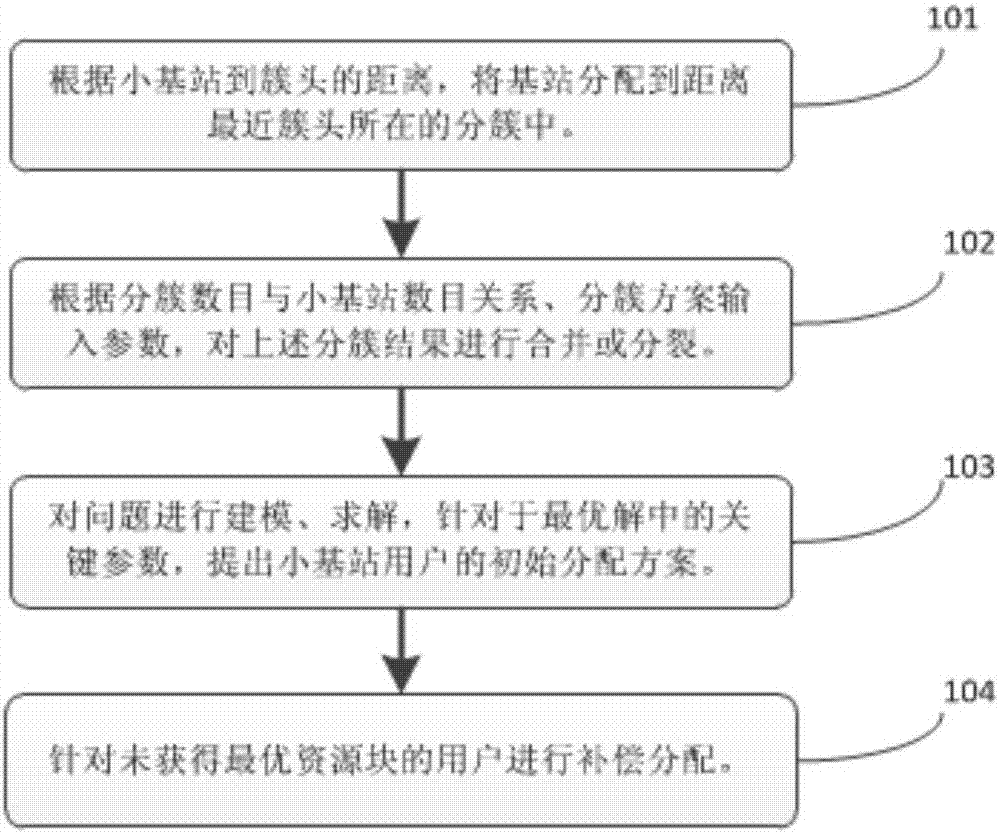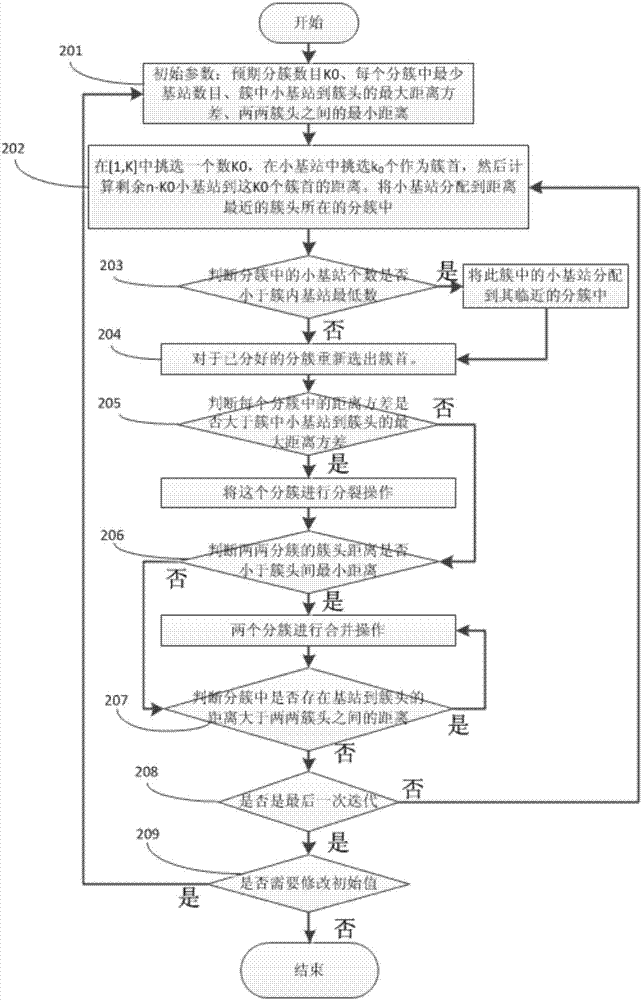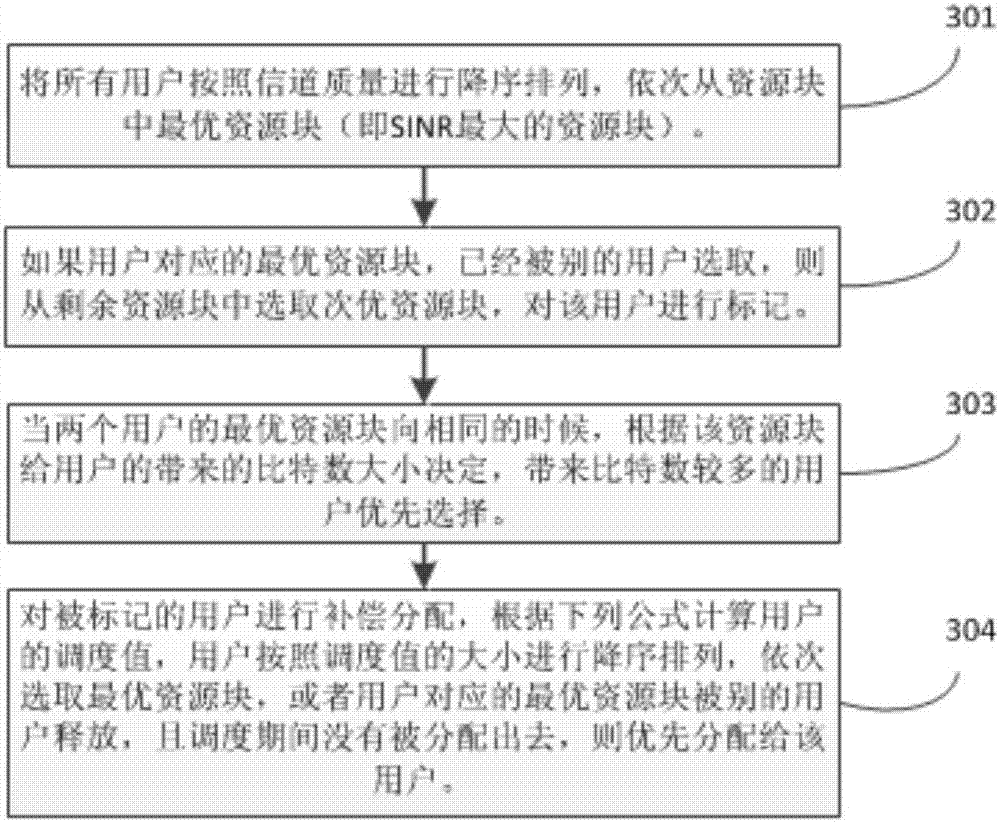Small base station user resource allocation method based on dynamic clustering in super-dense network
An ultra-dense network and user resource technology, applied in the field of small base station user resource allocation, it can solve problems such as insufficient distribution of small base station users, large differences in the number of small base stations, and no allocation of spectrum resources, so as to achieve system fairness , the effect of improving spectrum utilization and reducing signaling overhead
- Summary
- Abstract
- Description
- Claims
- Application Information
AI Technical Summary
Problems solved by technology
Method used
Image
Examples
Embodiment Construction
[0031] In order to express the purpose, technical solutions and advantages of the invention more clearly, the invention will be further described in detail below in conjunction with the accompanying drawings and specific implementation examples.
[0032] figure 1 An example diagram of a dynamic clustering-based small base station user resource allocation method in an ultra-dense network, the method includes the following steps:
[0033] Step 101: Use the relationship between the number of clusters and the number of small base stations: K=ln n (K is the number of clusters, n is the number of small base stations), given the expected number of clusters [1, K], select a number K in [1, K] 0 , pick K 0 small base stations as initial cluster heads, calculate n-K 0 small base station to K 0 According to the distance of the cluster head, the small base stations are assigned to the cluster where the nearest cluster head is located.
[0034] Step 102: On the basis of clustering in ...
PUM
 Login to View More
Login to View More Abstract
Description
Claims
Application Information
 Login to View More
Login to View More - R&D
- Intellectual Property
- Life Sciences
- Materials
- Tech Scout
- Unparalleled Data Quality
- Higher Quality Content
- 60% Fewer Hallucinations
Browse by: Latest US Patents, China's latest patents, Technical Efficacy Thesaurus, Application Domain, Technology Topic, Popular Technical Reports.
© 2025 PatSnap. All rights reserved.Legal|Privacy policy|Modern Slavery Act Transparency Statement|Sitemap|About US| Contact US: help@patsnap.com



